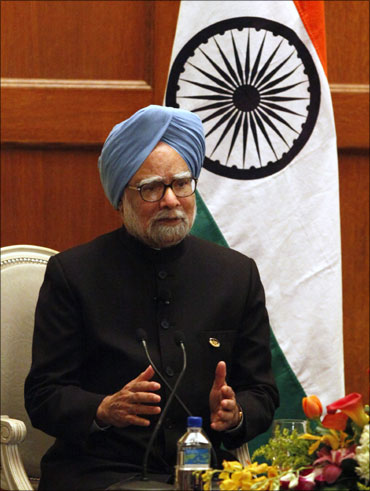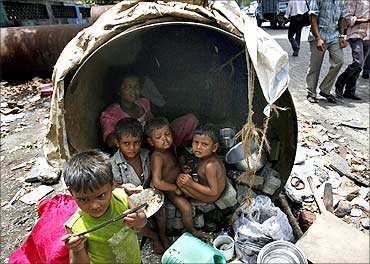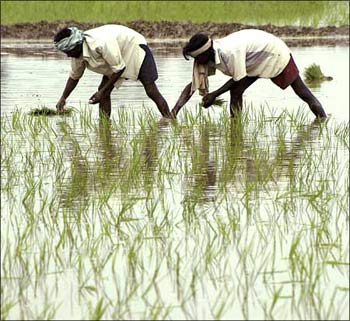
Earlier this month, Congress president Sonia Gandhi spent hours hearing party people grumble on how opposition parties were allegedly hijacking the United Progressive Alliance's flagship programmes and claiming these as their own.
Yet, the latest figures from the Union rural development ministry suggest opposition-ruled states are actually implementing the UPA's rural schemes better and more efficiently, while Congress-ruled ones are lagging.
The statistics (compiled till May), presented and analysed by the Performance Review Committee of the ministry last week, show that states run by UPA governments have not made much advance in implementing its signature rural development schemes.
The programmes under the Mahatma Gandhi National Rural Employment Guarantee Act (NREGA) are in especially poor shape.
While the Act gives a guarantee of providing 100 days of employment to anyone demanding it from a Below Poverty Line (BPL) household, the government has so far been able to reach a national average of just 54 days.
. . .

"There is a need to enhance the professional quality of the personnel, capacity building and the method of disbursement, especially in areas where the scheme has not performed well," Mihir Shah, member of the Planning Commission, told Business Standard.
"The solution is more effective utilisation of administrative costs, coming up with organisations based on partnerships and build up of infrastructure and capacities which will help in disbursement."
Only 13.24 per cent (6.95 million of 52.5 million) of households were provided 100 days of employment in 2009-10.
Among the top five states, with the highest number of households with 100 per cent employment, three are ruled by non-Congress parties -- Tripura, Sikkim and Nagaland.
. . .

This year, Congress-ruled Andhra Pradesh has been able to generate the highest persondays of work so far. Still, among the top five states in this category, three are run by the opposition -- Orissa, Chhattisgarh and West Bengal.
While Rural Development Minister C P Joshi's best achievement so far seems to be bringing a large number of Rajiv Gandhi Seva Kendras in his home state of Rajasthan (8,843 of 13,680 RGSKs), the work completion rate under NREGA is as low as 45.5 per cent. It is mostly water conservation-related work being taken up in various states, followed by rural connectivity projects.
The performance of the Indira Awaas Yojana, which seeks to build homes for the BPL population, is better, as the overall achievement is 83.52 per cent. Against a target of 4.05 million houses, 3.38 million were built during 2009-10.
Of the 10 states that achieved less than 80 per cent of the targets, five are run by the Congress, either on its own or in coalition (Arunachal Pradesh, Assam, Jammu & Kashmir, Manipur and Meghalaya).
. . .

The other ambitious rural connectivity scheme under Bharat Nirman, the Pradhan Mantri Gram Sadak Yojna (PMGSY), has seen mixed results. While the government has been able to surpass its target of road length (new roads and upgradation of old ones), it has been able to cater to demand in just 61 per cent of target habitations.
And, in 2009-10, of 11 states that could achieve its target of road length and habitation in PMGSY, eight were administered by opposition parties. These are Chhattisgarh, Gujarat, Karnataka, Madhya Pradesh, Nagaland, Punjab, Uttar Pradesh and Uttarakhand.
The rural development ministry has a huge task ahead to complete its target of connecting 54,648 rural habitations by 2012. Till this June, it could only connect 36,660 habitations since the project took off in 2005. In other words, 61 per cent done in five years.